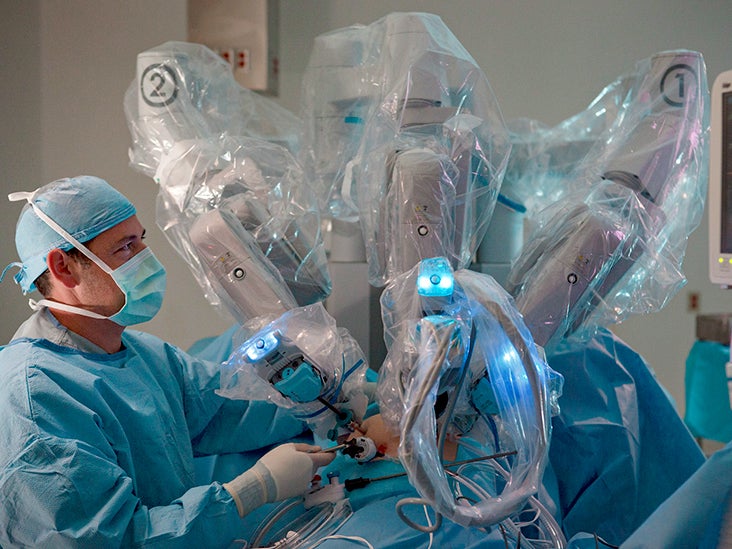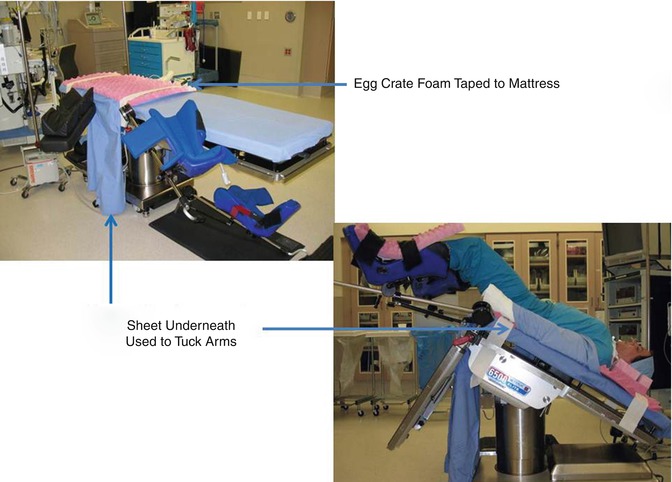Robotic Surgery What Position Are You In During A Hysterectomy

Robotic hysterectomies offer minimally invasive options, but a crucial factor often overlooked is patient positioning during the procedure. Understanding the position is vital for patient safety and surgical success.
The Prone Position: A Less Common but Viable Option
Traditionally, hysterectomies, including robotic ones, are performed with the patient in the lithotomy or Trendelenburg positions.
However, the prone position, where the patient lies face down, presents a viable alternative in specific cases. This approach enhances surgical access in certain anatomical situations, improving visualization and instrument maneuverability for the surgeon.When is the Prone Position Considered?
The prone position is primarily considered when dealing with complex cases or when access from the traditional positions is restricted.
This includes situations involving significant pelvic adhesions, large uterine fibroids impacting access, or prior surgeries altering the pelvic anatomy. According to a study published in the Journal of Minimally Invasive Gynecology, the prone position can offer improved visualization of the posterior pelvic structures.The Lithotomy and Trendelenburg Positions: The Standard Approach
The lithotomy position, with the patient lying on their back and legs raised and supported, is the most common position for robotic hysterectomies.
The Trendelenburg position, a variation where the patient is tilted head-down, is often used in conjunction with the lithotomy position. These positions offer good access to the pelvic region and are well-established in surgical practice.Benefits of Standard Positioning
The lithotomy and Trendelenburg positions are familiar to surgical teams and offer standard access for robotic instruments.
These positions allow for optimal visualization with the robotic camera and efficient removal of the uterus. They also provide the necessary space for instrument manipulation during the procedure.Patient Safety and Positioning Considerations
Regardless of the position chosen, patient safety is paramount.
Careful attention must be paid to proper padding and support to prevent nerve damage and pressure sores during the procedure. The surgical team monitors the patient's vital signs throughout the operation to ensure stability.Risks Associated with Prolonged Positioning
Prolonged time in any surgical position can pose risks, including nerve compression and circulatory issues.
The Trendelenburg position, in particular, can increase pressure in the head and neck, potentially leading to complications. Surgeons and anesthesiologists work together to minimize these risks through careful monitoring and adjustments during surgery.Robotic Hysterectomy: A Minimally Invasive Approach
Robotic hysterectomy utilizes robotic arms controlled by a surgeon to perform the procedure through small incisions.
This approach offers several advantages over traditional open surgery, including reduced pain, less blood loss, and a faster recovery time. da Vinci Surgical System is a widely used platform for robotic hysterectomies, enabling precise movements and enhanced visualization for the surgeon.Recovery and Post-Operative Care
Following a robotic hysterectomy, patients typically experience a shorter hospital stay and quicker return to normal activities.
Pain management and wound care are essential components of post-operative care. Patients are generally advised to avoid heavy lifting and strenuous activity for several weeks after the procedure.The Surgeon's Role in Position Selection
The selection of the appropriate surgical position is a crucial decision made by the surgeon.
This decision is based on the patient's individual anatomy, the complexity of the case, and the surgeon's experience. A thorough pre-operative evaluation helps the surgeon determine the optimal approach and positioning for the hysterectomy.Communicating with Your Surgical Team
Open communication with your surgical team is vital before undergoing a robotic hysterectomy.
Discussing your medical history, concerns, and expectations can help ensure a safe and successful procedure. Don't hesitate to ask questions about the planned surgical position and the rationale behind the surgeon's choice.Ongoing Developments and Research
Research continues to refine surgical techniques and optimize patient outcomes in robotic hysterectomies.
Studies are exploring the benefits and risks of various surgical positions to improve patient safety and surgical efficacy. Stay informed about the latest advancements in robotic surgery through reputable medical sources and consultations with your healthcare provider.










![Robotic Surgery What Position Are You In During A Hysterectomy DVIDS - Images - Robotic Hysterectomy [Image 21 of 21]](https://d1ldvf68ux039x.cloudfront.net/thumbs/photos/2201/7048796/1000w_q95.jpg)






